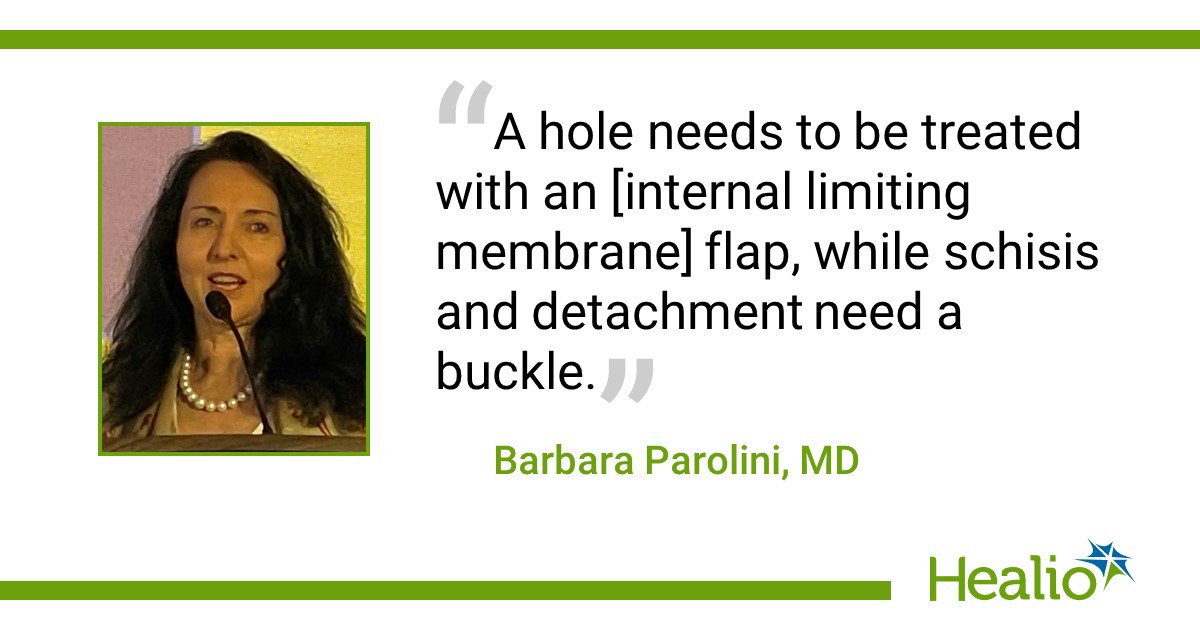FORT LAUDERDALE, Fla. — Myopic traction maculopathy, or MTM, is an evolving disease that requires different management at different stages.
In the advanced stages, buckling leads to high rates of anatomic and functional success, one speaker said at Retina World Congress.

Image: Alex Young | Healio
After 15 years of experience in hundreds of cases, Barbara Parolini, MD, published the Myopic Traction Maculopathy Staging System, which recently obtained international validation by the Retina World Congress Global Research Group.
“It summarizes everything you need to know on MTM — the nomenclature, the evolution from schisis to detachment, and the average time taken to evolve from one stage to the next,” she said. “For each stage, there is a proposal for management. In summary, a hole needs to be treated with an [internal limiting membrane] flap, while schisis and detachment need a buckle.”
Although the most common treatment for MTM is vitrectomy, the literature shows 80% anatomical success and 60% functional success with this surgery, with failure in the most severe cases. In her case series of 400 macular buckles, with a follow-up from 1 to 15 years, Parolini achieved 98% anatomic success within 6 months and vision in the range of 20/20 to 20/40. Even difficult cases can be resolved with a significant improvement in vision, and the procedure takes no more than 20 minutes under local anesthesia.
Importantly, buckle does not induce atrophic changes, Parolini said.
“I have published very recently a study collecting data over 10 years of follow-up studying what happens in the operated eye vs. the contralateral eye, and I have seen that it does not induce atrophy,” she said.
